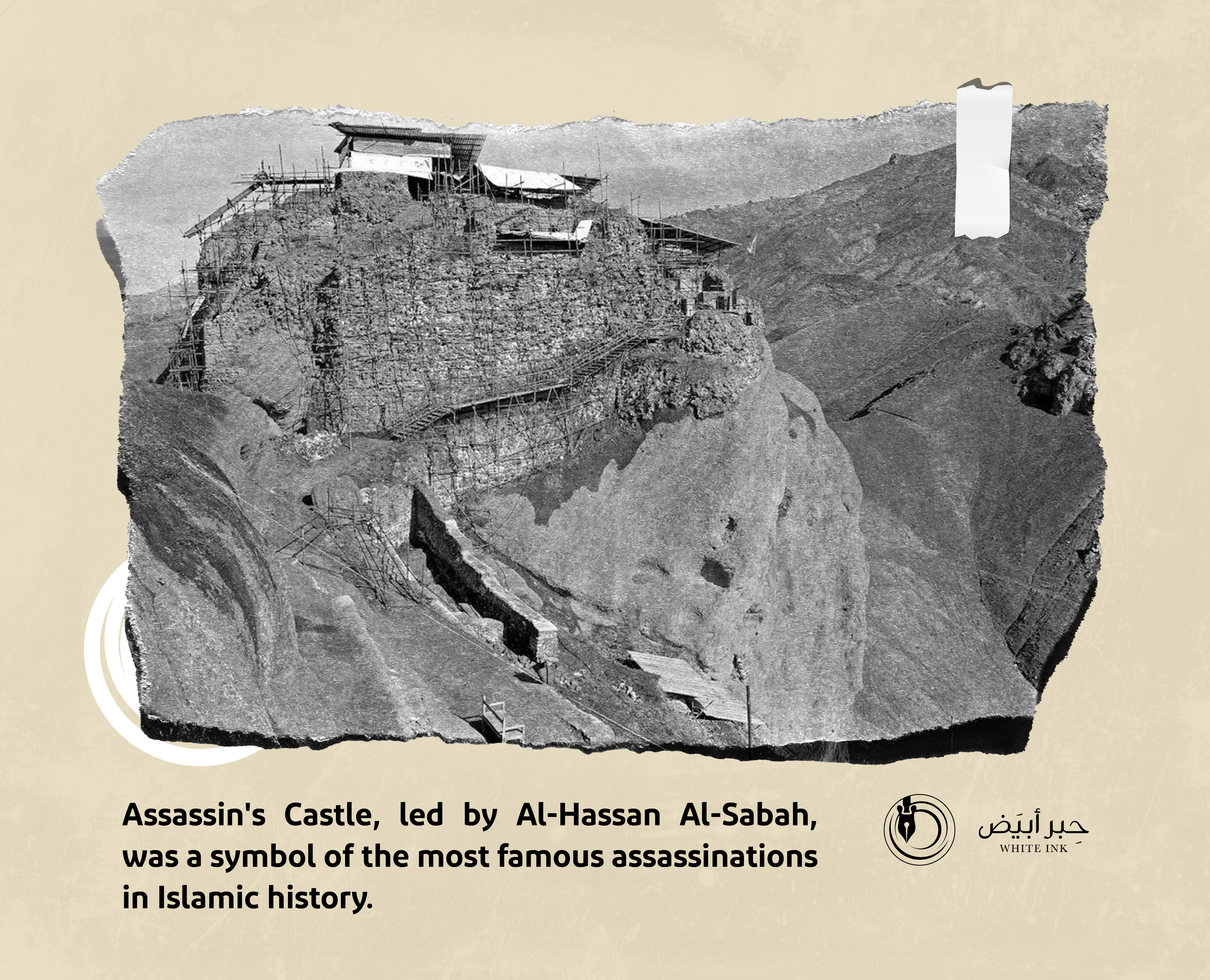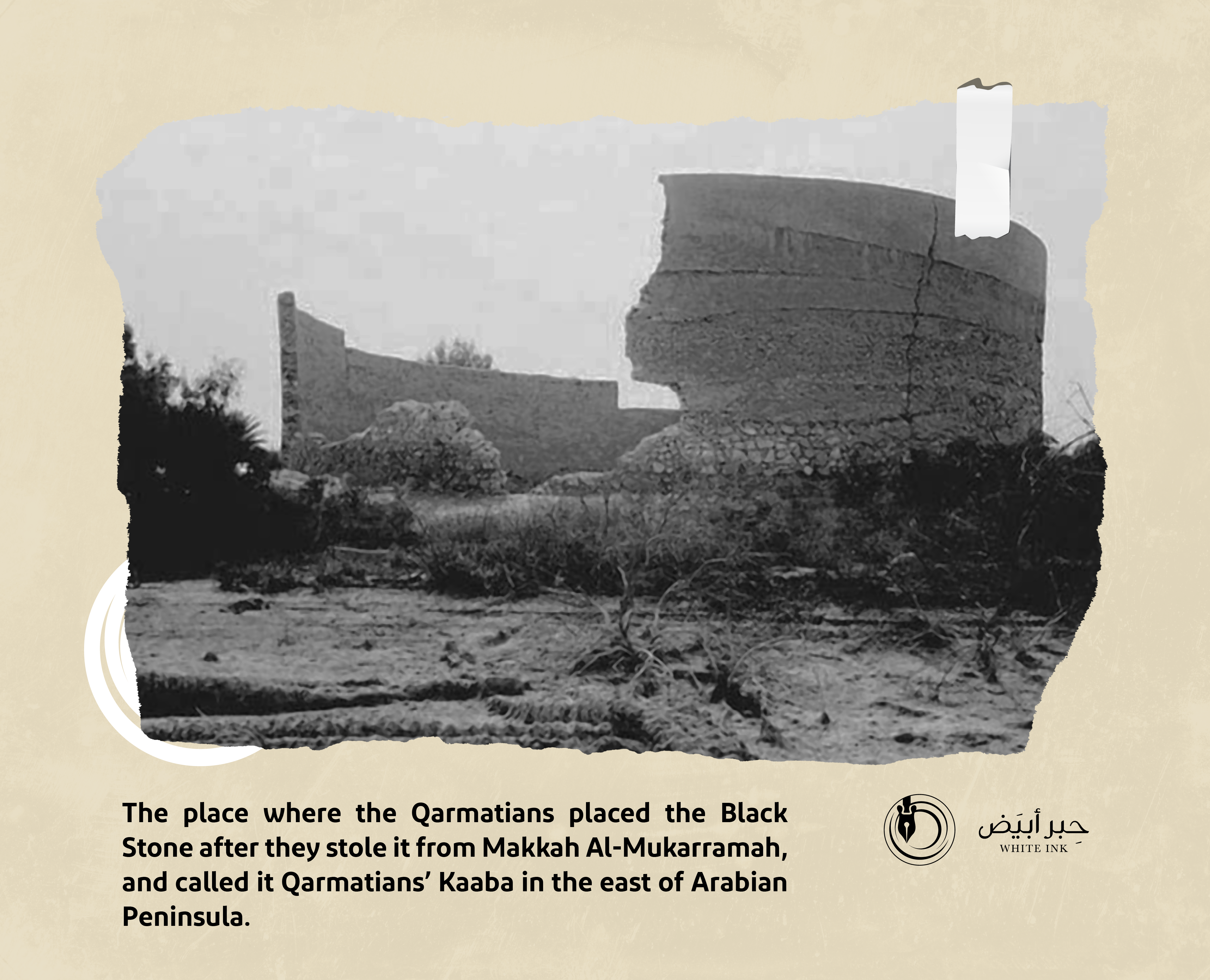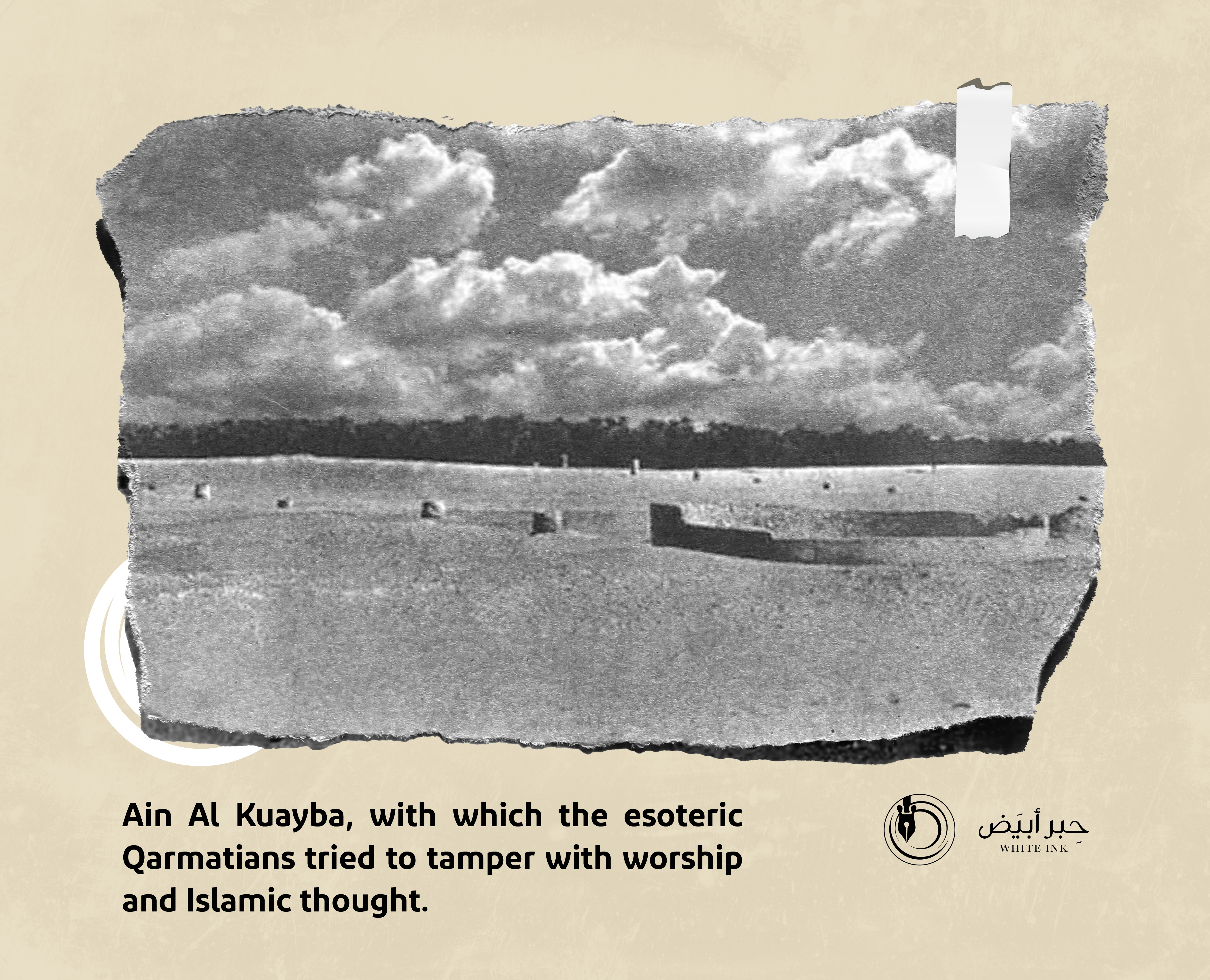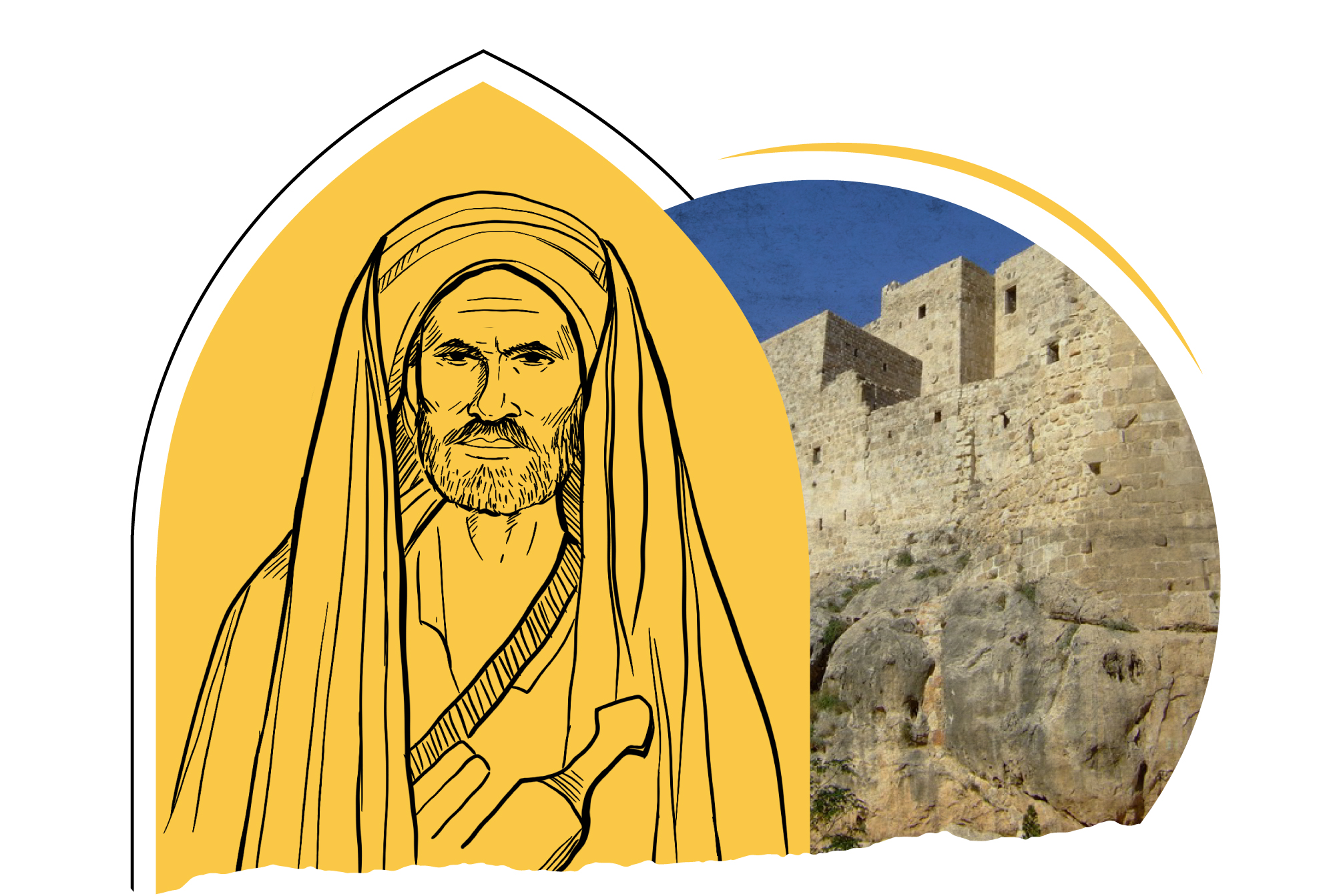
Assassins Movement
Image of Persian Terrorism in Islamic History
The Assassin movement is one of the most dangerous destructive movements in Islamic history. They are an esoteric sect that emerged from the mantle of Persian thought and was associated with the Ubaidi state, known as the Fatimids, even if it separated therefrom after a period of association therewith. They mastered secret terrorism and the Assassins became among the extremists of that thought.
That secret sect that terrorized the world for decades was founded by Al-Hassan Al-Sabah. Historical sources agree that he was born in Persia around the year (1037 AD) and died in Persia as well around (1124 AD). His beginnings were ordinary and do not indicate his transformation into a terrorist leader. He began with interest in science and philosophy. It was said that he was related to the famous Persian poet Omar Khayyam, except that Al-Sabah was the leader of the most important secret terrorist group that sheltered in high castles, from which the followers used to descend to carry out terrorist assassinations, which spread terror in the hearts of people. One of the key scholars of the Assassins’ history and ideas, the American orientalist Bernard Lewis, describes this group, saying: ” Ismaili Assassins were truly the first terrorists who were able to adapt terrorism to achieve their political goals”.
Historical sources tell us how Al-Hassan Al-Sabah recruited his followers, who were called the fedayeen, to undertake terrorist operations. He selected them at a relatively young age because it is easier to control them intellectually and religiously. Meanwhile, the young age of the “volunteer” helps him to undergo arduous military training. They were also taught different languages that would allow them to infiltrate the targeted sites as if they are from among their peoples. All facilitates their carrying out their terrorist operations.
It is said that they were controlling those young men psychologically and morally through doses of narcotics, entering them into lush gardens, so they would imagine that they were in heaven, after which they persuade them to carry out terrorist operations, promising them that if they were killed, they would go to that paradise they witnessed. Some believe that the said drug, which was commonly used among them, was hashish, and that is the reason behind naming them “Al-Hashasheen” in Arabic.
The truth is that this terrorist group was a source of terror for both the East and West. German pastor Pro Cardus describes the Assassins, saying: “The Assassins, whom man should curse and avoid, sell themselves and are thirst for human blood. They kill innocents for money and have no regard for life or survival. They change their appearance like devils that turn into angels”.
In a report sent to Emperor Frederick Barbarossa, dating back to the year (1175 AD), the Assassins are described as “mountain dwellers who eat pork, which is prohibited by Islamic law, and perform all prohibitions”. On Islamic side, some refer to the Persian influence in the emergence of the Assassins and other esotericist groups.
Abdullah Annan also emphasizes the Persian influence on the Assassin’s call, saying: “Assassin’s preachers moved first of all in Persia, as we should not forget that Persia was like that from the beginning”, stressing that the Persian national movement relied on the revolutionary call and its momentum to destroy the Abbasid state.
The Assassins were keen to show the general public that they were “worshippers of the night and knights of the day”. They talked a lot about the piety and virtue of their followers. Some researchers believe that the Assassins have been indicating that image of themselves in order to hide their truth, especially the affairs of their preachers and leaders. From this point, some refer to the state of extreme contradiction in the affairs of this odd, secretive sect. While Assassins’ advocates impose a state of piety and devotion on their followers, we find the opposite in the elite of that sect: “The seniors of the sect are far from that. To them, religion was nothing but a method. They did not believe in any of Islam’s teachings and believed that all means are legitimate in order to achieve the worldly goals they aspired to. Their slogan was that there is no truth in existence and every matter is permissible”.
In fact, considering what the Assassins committed in terms of assassinations and terrorism, it is evident that the dagger emblem carried thereby has turned into a source of terror in the world, until their name has entered European languages under the name the “Assassin”, as a synonym to terrorism. Bernard Lewis says: “It was not until the thirteenth century that the word Assassin entered European usage in various forms in this sense; i.e., professional killer”.
In the Islamic East, the Assassins turned into a pickaxe for the destruction of Islamic countries. Perhaps the best evidence for that is that they succeeded in assassinating two of the Abbasid caliphs. They also tried to assassinate Sultan Salah al-Din al-Ayyubi twice. Even common people were not spared from their terror. They spread terror and fear everywhere by blocking roads and attacking neighboring villages. They also seized people’s money and belongings. Trade convoys passing by their castles were subjected to repeated attacks, until it was rumored that if a man was late to return to his home, his family believed that he had fallen into the hands of the Assassins and they would start to accept condolences. Pilgrims’ convoys were not exceptional. In the year (1105 AD), pilgrims’ caravans gathered in Transoxiana, Khurasan and India and arrived to Nishapur. The Assassins attacked these convoys, killed a lot of them and seized their money and luggage, where scholars, imams and ascetics were among those victims.
Terrified the world, adopted the teachings of extreme Persian nationalism and sponsored hired killers.

Undertaking an assessment of these movements, or talking about the impact of that terrorism on Islamic world, and whether the terrorism of the Assassins succeeded in the end, we find the opinions of trusted historians that confirm their failure. Annan points out that this movement tried to “destroy the first teachings of Islam” and attempted to tear “the unity of Islam from the beginning”, but they ultimately failed.
Bernard Lewis also confirms the failure of their terror, saying: “Ismaili Assassins failed miserably and ultimately as they were not able to overthrow the established order. They even did not succeed in controlling a single large city. Even their possessions, which were guarded by castles, were no more than small principalities that were soon invaded”.


1. Bernard Lewis, The Assassins, Arabized by Muhammad Al-Azab Musa, 2nd edition (Cairo: Madbouly Bookshop, 2006).
2. Abu Hamid al-Ghazali, Esotericism Scandals, edited by Abd al-Rahman Badawi (Kuwait: Dar al-Kutub, 1964).
3. Abdel Wahhab Azzam, Relationships Between Arabs and Persians and Their Literature in Pre-Islamic and Islam (Cairo: Hindawi Foundation, 2013).
4. Muhammad Al-Khasht, The Assassin Movement (Cairo: Ibn Sina Library, 1988).
5. Muhammad Abdullah Annan, History of Secret Societies and Destructive Movements in the East (Cairo: Al-Mukhtar Foundation, 1991).
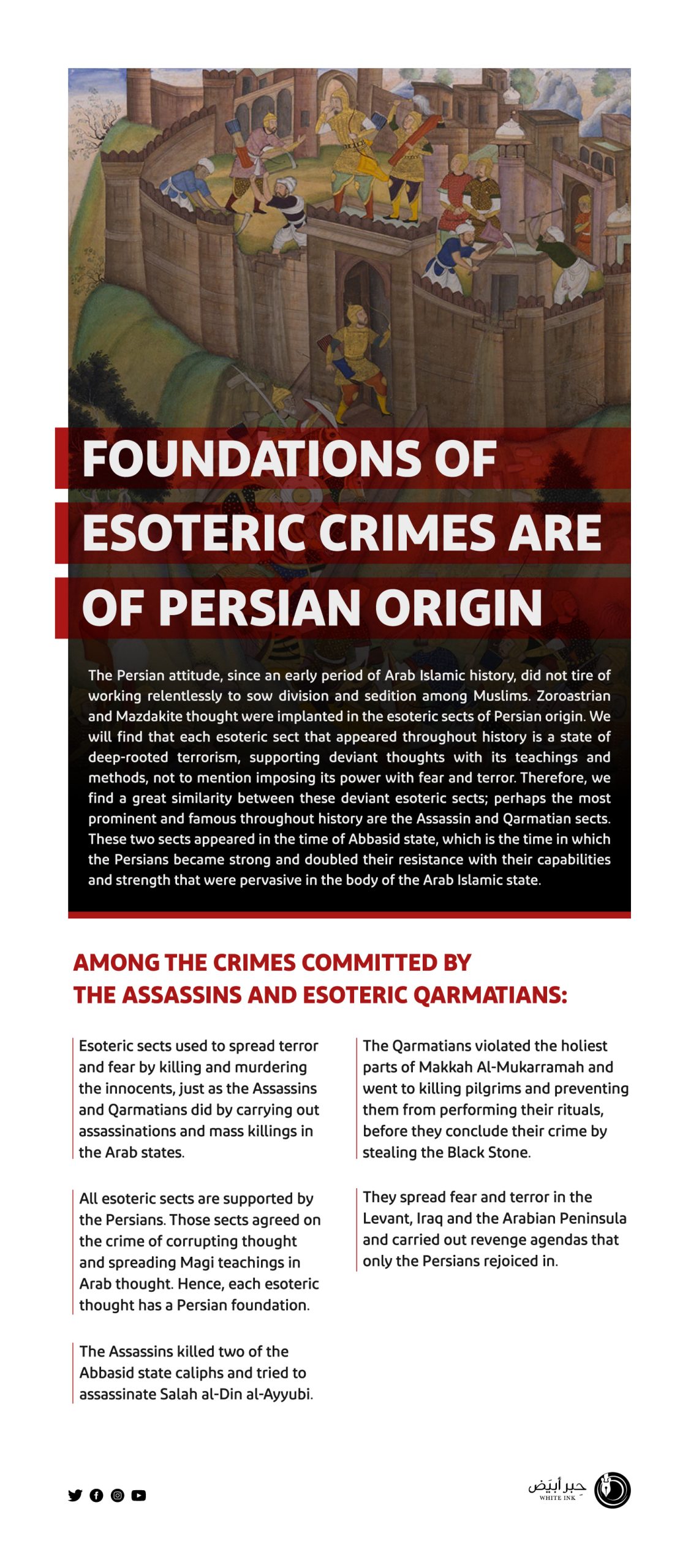
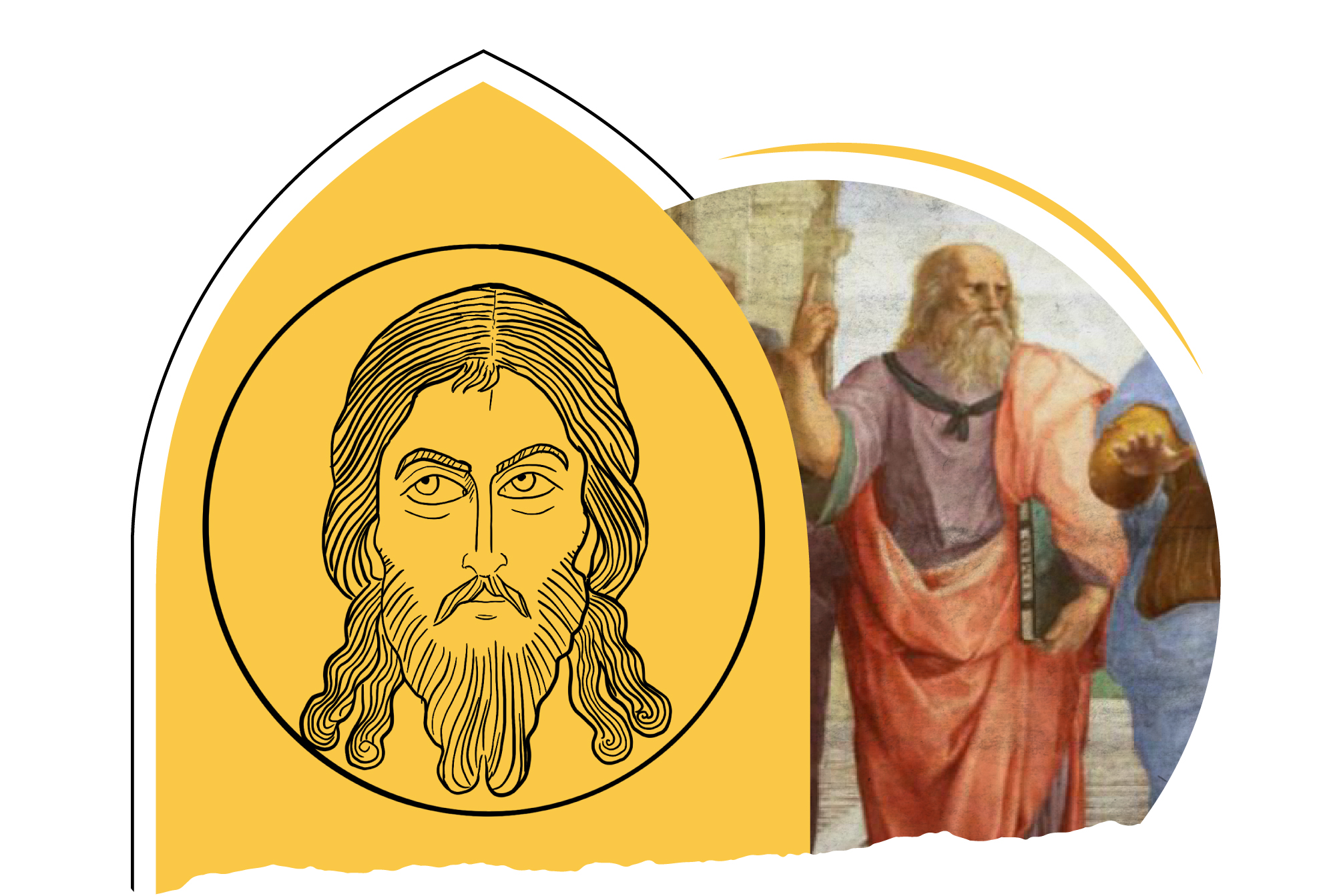
Esotericism’s Assassination Crimes
Sedition and Separation in Islamic History
Corrupt interpretation of Qur’anic text necessarily leads to the corruption of opinion, which ends up with malpractice. Interpretation then becomes the satiated understanding and the followed action. Persian esotericism was of the opinion that it is impossible to empower its corrupt beliefs outside the religious framework and sought to adopt demolition tactics from within by claiming affiliation and following the example of some righteous companions and imams.
Esotericism found in the Platonic understanding a basis to conceal its false doctrines and reveal them only to the elite. Here we find that Plato “was presenting one idea in different terms, giving each of them different or contradictory meanings, especially when he spoke about divine matters, mentioning that it is impossible to reveal it to all people, because the light that flows from this truth dazzles the eyes of the public”.
Perhaps one of the most important manifestations of esotericism is Al-Taqiyyah with its Platonic reference. It is that trait concerned with dropping ordinances and allow the abundance of authorship and permitting taboos secretly and disavowing them openly. On this point, Abu Hamid al-Ghazali said: “It is from them that absolute permissibility, the lifting of veil, the permissibility of prohibitions and t the denial of sharia are taken, yet they all deny that such matters are attributed to them”.
Esoteric allegations are exposed by the truth of their corrupt belief, which leaked from the private to the public. It is sufficient to say that esotericism finds interpretation in the text for any corruption in opinion or anomaly in action, to the extent of permitting dignity assault in absolute. They advocated the forbidden in all forms.
Referring to the historical contexts in which that off thought was formed, narratives conflicted about the origin of this malicious plant and its first founder. Explanation and details would be too lengthy and would take us away from the point of research. However, the lack of detail does not preclude some origination, focusing on a strange person that sources claim to be the first founder of esoteric ideas, who is known as Abd Allāh b. Maymūn al-Qaddāḥ. According to that claim, Al-Qaddāḥ was one of the followers of Abu Al-Khattab, who founded a sect under the name of Maimonides. He was also a supporter of Ibn Disan, the head of the famous heretics of Harran, and the founding dualist of the Christian Gnostic doctrine of Disani. Then the story develops even further with Ibn Maimonides, who claimed to be a prophet and backed that claim by practicing sorcery and tricks. He also organized a movement and established a system of beliefs that consist of seven stages culminating in moral decay and atheism.
Al-Qaddāḥ’s teachings have turned into a constitution approved by some esoteric sects and the Ubaid state, which are organizations that strive to destroy Islam on the grounds that it is responsible for the breakup of the Persians and the fall of their empire.
About the motives of Al-Qaddāḥ and his political goals, Anwar Al-Jundi provides an important reading in the backgrounds of Al-Qaddahi’s thought, saying: “Western historians, such as De Sassi and Demog in particular, confirm that Allāh b. Maymūn al-Qaddāḥ had a political motive in eliminating the authority of the Arabs and the Islam religion that brought them that authority, so as to restore the ancient glory of Persia once again”. In his book (The Late Abbasid Ages), Abdullah Al-Douri confirms the claim that Al-Qaddāḥ wanted to undermine Islam, so he ignited the esoteric concept among the masses. He formed the Qarmati sect that led to atheism and exploited the name of Ismail bin Jaafar Al-Sadiq to stir up a strong Shiite movement that transfers the authority to one of his descendants in the name of Al-Mahdi.
Esoteric key goals centered on the destruction of Islam, overthrowing its pillars and underestimating the rulings.

On his part, the esoteric Qayrawani mentions in his letter to Suleiman bin al-Hassan the following: “I advise you to push people towards questioning Qur’an, Torah, Psalms and the Gospel and to call them to nullify the laws and sharia, resurrection and the angels in heaven”. Then Qayrawani continues to reveal the wickedness of the call and the filth of the belief, saying: “There is not more surprising matter than a man who claims to be rational, then he has a sister or a beautiful daughter, while he has the prettiest wife, and yet he forbids his wife to himself and marries her to a foreigner who, as any wise man would see, should have that sister or daughter”.
Esotericism recorded their reputation by blood-shedding, treachery and betrayal as their sects set out to stab Islam from within in service of the Magi races’ beliefs, so as to lay the first foundations of esotericism. Their teams mastered the desecration of Muslims’ blood, honor and money and managed to establish countries that owe loyalty and belonging to their beliefs.
Therefore, throughout its history, esotericism has targeted the Islamic State’s centers of gravity by focusing on the assassination of influential elements in the political decision-making (the system of kingship, etc.), which is the same strategy adopted by any organization that claims belonging to Islam, implementing a terrorist agenda. Muslim Brotherhood organization used the same esoteric strategy when Sayyid Qutb adopted his malicious tactic against Gamal Abdel Nasser’s regime, calling is the “Head-Picking Theory.”


1. Abu Hamid al-Ghazali, Scandals of Esotericism, edited by Abd al-Rahman Badawi (Kuwait: Dar al-Kutub, 1964).
2. Farhad Daftary, The Ismailis: Their History and Doctrines, 2nd Edition (Beirut: Dar Al-Saqi, 2014).
3. Abdul Qaher Al-Baghdadi, The Difference Between Groups, (Cairo: Ibn Sina Library, 1988).
4. Muhammad al-Khatib, Esotericism Movements in Islamic World, 2nd edition (Riyadh: Dar Alam al-Kutub, 1986).
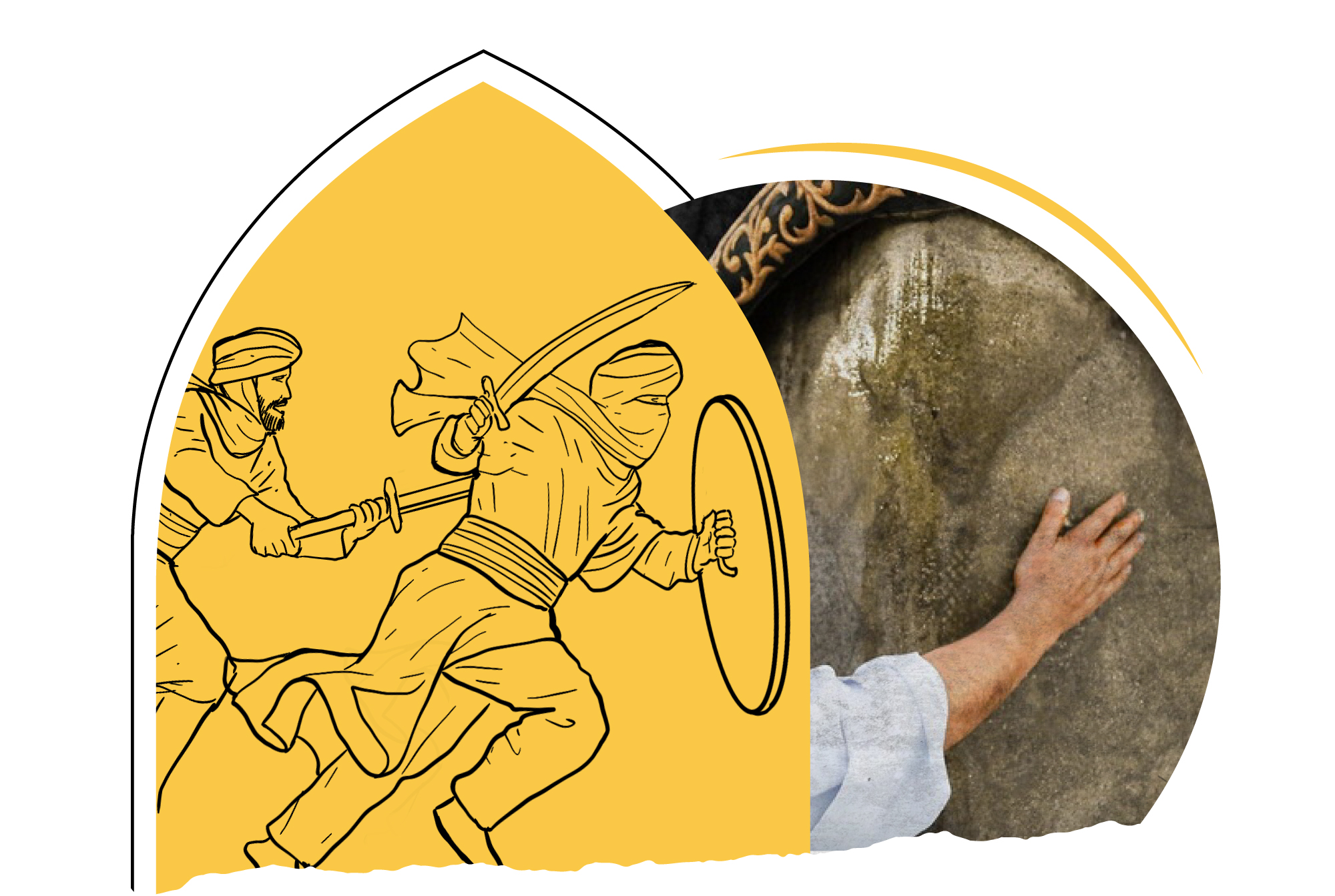
Persian Esoteric Crimes in Islamic History
Qarmatians from Stealing the Black Stone to Shedding Muslim Innocent Blood
No sooner had the Persians penetrated the Abbasid state during the rule of caliph al-Ma’mun during the period (814-833 AD) than they jumped into a revolution against the Abbasids and the Islamic religion, after they penetrated until they almost destroyed the state from within, aiming to antagonize the Arabs and Muslims. They considered the Arabs as their opponent as they destroyed their Sasanian empire in the Battle of Al-Qadisiyah. The Qarmatians worked on penetrating Arabs’ ideas and tried to deflect the compass. They contributed to the incursion of the esoteric sects. The most ferocious, violent and deviant of the esoteric sects of Persian origin was the Qarmatians who raided the holiest Muslim place, Makkah Al-Mukarramah, plundered it, seized the Black Stone and kept it for two full decades, in which it was exposed it to destruction. The Qarmatians spread dissent and permitted infallible blood in the Sacred Land in the Sacred Month.
Qarmatian Persian Law:
Searching deeply in the Qarmatians’ laws and the ideas they embraced, we immediately find that they were influenced by the Persians and their worship and superstitions in all matters. Their worshipping teachings and their feasts are Persian. They sanctify the Persian day of Newroz, in addition to applying Persian terrorism, declaring unbelievers those who do not believe in their law and permitting the killing of women and children who oppose them.
First Qarmatian Revolutions in Bahrain and Kufa:
Bahrain was a permanent platform for Persian dreams. As it was in the past, it is still today the dream of the Persians to penetrate the Arabian Peninsula. The first bloody Qarmatian revolt began in Bahrain in the year (899 AD), then it was followed by a revolt in Kufa (902 AD). During their revolutions, they killed, violated, expanded and gathered around them some of those who were deceived by their deviant law. The Abbasid state was in a period of weakness and underestimation, so it did not stand up to the Qarmatians and contented itself with fencing and protecting Basra. Multiple revolutions erupted in several locations, followed by a revolution in the Levant, where their goal was to destroy the caliphate and disperse it.
The Qarmatians are an extremist esotericist sect. They used to show rejection (Shiism) and conceal pure disbelief. Abu al-Faraj Ibn al-Jawzi said about them that they are a group of Persian atheistic heretics who believe in the prophecy of Zarathustra and Mazdak. As for naming them the Qarmatians, it is after Hamdan Qarmat ibn Al-Ash’ath Al-Baqar, who was an active man among Esotericism preachers, who used to walk in short steps (qarmata in Arabic). He worked as a baker in Kufa and used to call for an imam from the Prophet’s family.
The first actual appearance of the Qarmatians on the scene of events was in the year (899 AD), at the hands of Abu Saeed Al-Hassan ibn Bahram Al-Janabi, who went out to Bahrain, where he settled and worked as a merchant selling food. He joined esotericist preachers in Qatif and appeared among them, until he succeeded in leading them. They responded and turned around him till he became their Emir. He became famous in Bahrain and his followers increased, which rendered him stronger. Then he began to wreak havoc on earth, leading his followers to raid Hajar in Al-Ahsa in the year (900 AD), where they overcame its people and killed and enslaved a countless number of its people and spread corruption therein. The caliph equipped them with a heavy army, yet the Qarmatians managed to enslave them all till Abu Saeed killed them all, sparing the life of their leader, Al-Abbas ibn Amr Al-Ghanawi.
Qarmatians are a group of Persian atheistic heretics who believe in the prophecy of Zoroaster and Mazdak.

Bahrain and Al-Ahsa in the hands of the Qarmatians!!
The Qarmatians took over Bahrain and Al-Ahsa and took Hajar as a base for their attacks on the Abbasid state and the convoys of pilgrims, during which they committed atrocities and slaughters that terrified the Muslims severely and prevented many from performing the rituals of Hajj in some years for fear of being subjected to sudden Qarmatian attacks.
Despite the apparent strength of the Qarmatians, which enabled them to defeat the forces of the Abbasid state in many of the confrontations that took place between both parties and allowed them to seize some Iraqi, Hijazi, Levantine and Egyptian states, yet the Qarmatians did not have a state in the strict sense of the word. They were a brutal military force that relied for continued existence on those sudden raids it launches on neighboring countries or attacks on convoys, especially pilgrims’ convoys, obtaining spoils and booties and taking them back to their bases in Bahrain and Al-Ahsa to survive therein for a while
Qarmatians in the Levant:
During the period (902-903 AD) the Qarmatians appeared in the Levant under the leadership of Zakarawayh ibn Mihrawayh and invaded the forces of the Abbasids and the Tulunids who confronted them. They wreaked havoc there, killed countless of its people, looted money and burned homes and furniture. Then the plan backfired when the Abbasid armies set out from Iraq to fight them under the leadership of Muhammad ibn Suleiman Al-Kateb and Al-Hussein ibn Hamdan. The Qarmatians were defeated. Many of them were killed and a large number were taken as prisoners. Whoever remained of them fled to their bases in eastern Arabia.
Abu Saeed al-Janabi remained at the head of the Qarmatians for about fifteen years, until his servant killed him in (913 AD), then his son, Abu Taher Suleiman ibn al-Hasan ibn Bahram al-Janabi took charge of them till year (944 AD). Abu Taher is considered the strongest, longest-reigning and most dangerous of the Qarmatian leaders to the Abbasid state, to Muslims in the region in general and to the pilgrims of the Sacred House of Allah in particular.
Captivity of Basra and the shedding of blood:
The Qarmatians committed brutal deeds to the Abbasid state. Whenever they entered any place, they destroyed and violated it. They adopted a plan of sudden raid and seizure of cities and villages, stirring terror and panic therein, which is the method of the terrorists today; similar to what ISIS does in our time. Every terrorist thought stems from the “Persian thought”.
In the year (923 AD) the Qarmatians attacked the city of Basra, plundered it and captivated its people. Abu Taher al-Janabi demanded the caliph to include Basra in his state, along with al-Ahwaz. The caliph refused and the Qarmatians raided Kufa in the following year, violated it for six days and carried whatever they could of its money and wealth to their state. People were terrified, so Caliph Al-Muqtadir marched to them in a large army, yet Abu Taher and his followers defeated and dispersed them, taking over Al-Rahba and Al-Raqqa in north Levant.
Year (927 AD) witnessed another round of fighting between the Qarmatians and the armies of the Abbasid state, in which Abu Taher and his men, who were about two thousand and seven hundred fighters, were victorious over the Abbasid commander Yusuf ibn Abi al-Saj and tens of thousands of soldiers in battles near Kufa and Anbar, until they approached the capital, Baghdad, where they killed many soldiers and took over thousands of them. Informed of the defeat of his armies, caliph Al-Muqtadir was amazed and said: “May Allah curse an army if more than eighty thousand soldiers who are incapable of defeating two thousand and seven hundred men”.
Qarmatians and the Black Stone:
Muslims cannot forget the reprehensible crimes of the Qarmatians in Makkah Al-Mukarramah. Even these holy lands were not spared from the corruption of their minds and the deviation of their thoughts. However, all this is understandable if we know that they stem from their hatred against Islam and Muslims and the place where the Arab Prophet was born and from where the message of Islam has been launched; Makkah Al-Mukarramah.
Their aggression against the Sacred House of Allah and the pilgrims thereto was in the year (929 AD) when they stormed Makkah Al-Mukarramah with seven hundred men. It was the seventh of Dhul-Hijjah when they killed the its people and the pilgrims who were preparing to standing at Arafat and performing the rituals. At that day, the Qarmatians killed about thirty thousand of them, stormed the Sacred Mosque and uprooted the Black Stone and the Kaaba’s door and curtains, which they kept for more than twenty years in the headquarter of their rule in Qatif. They filled up Zamzam well with the bodies of the dead whom they killed in the mosque. As for their leader, Abu Taher, he stood on the doorstep of the Kaaba and shouted in ecstasy: ” I am by God and God is me * He creates people and I annihilate them”.
When Al-Qarmati was on his way home, the Emir of Makkah, along with his household and his army, followed him and beseeched him to return the Black Stone to be put in its place. He offered all the money he had, yet Al-Qarmati refused and they fought, yet the Emir of Mecca was killed in the battle, along with most of his people and soldiers and Al-Qarmati continued to his country with the Black Stone and the money of the pilgrims. Ibn Katheer said: “This damned person practiced atheism in the Sacred Mosque in a way that no one did before or after him”.
No Haj rituals were performed that year. The Qarmatians went back home after they committed that heinous massacre and kept the Black Stone in their possession until they returned it back to Kaaba in the year (951 AD), saying: “We took it by order and brought it back by order”, which is meaningless, futile talk.


1. Ismail Ibn Katheer, The Beginning and the End, edited by: Abdullah Al-Turki, (Dar Hajar for Printing, 1418 AH-1977)
2. Abu Hamid al-Ghazali, Scandals of Esotericism, edited by Abd al-Rahman Badawi (Kuwait: Dar al-Kutub, 1964).
3. Abdul Qaher Al-Baghdadi, The Difference Between Groups, (Cairo: Ibn Sina Library, 1988).
4. Ghaleb Awaji, Contemporary Sects Ascribed to Islam and Islam’s Position Thereon, 4th Edition (Jeddah: Al-Maktaba Al-Asriyyah, 2001).
5. Muhammad al-Khatib, Esotericism Movements in Islamic World, 2nd edition (Riyadh: Dar Alam al-Kutub, 1986).
6. Muhammad Abdullah Annan, History of Secret Societies and Destructive Movements in the East (Cairo: Al-Mukhtar Foundation, 1991).


